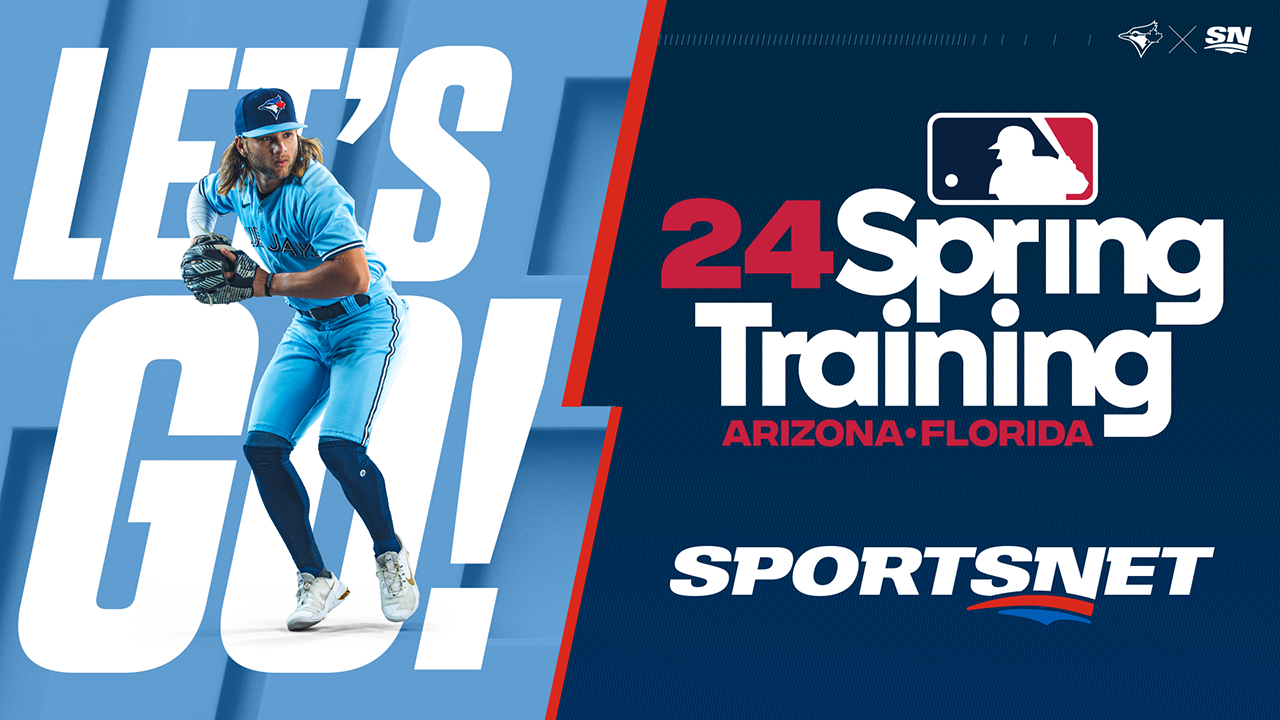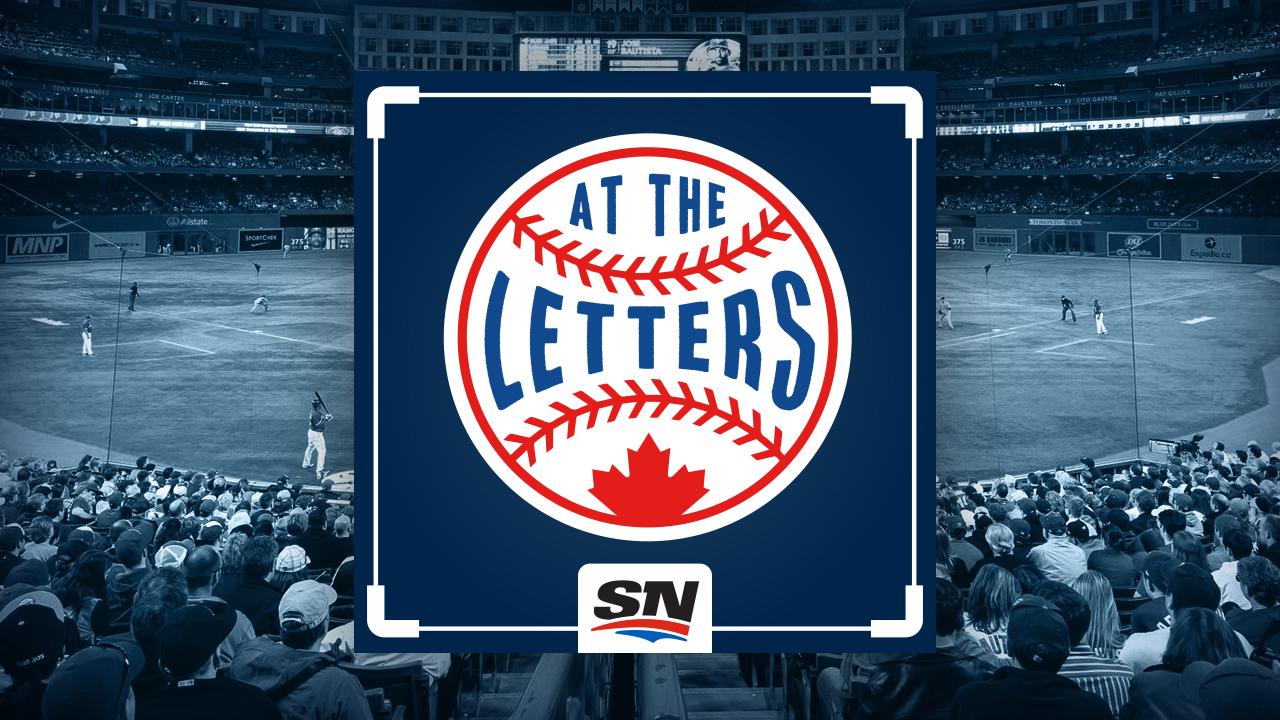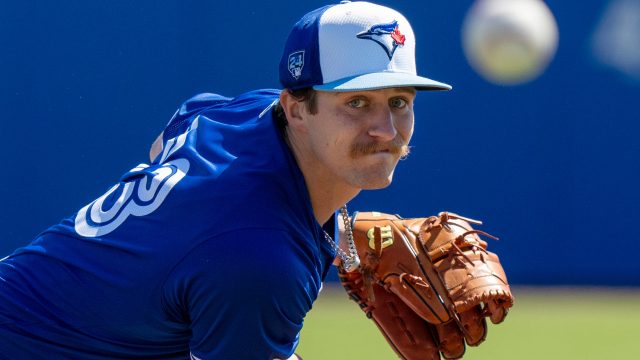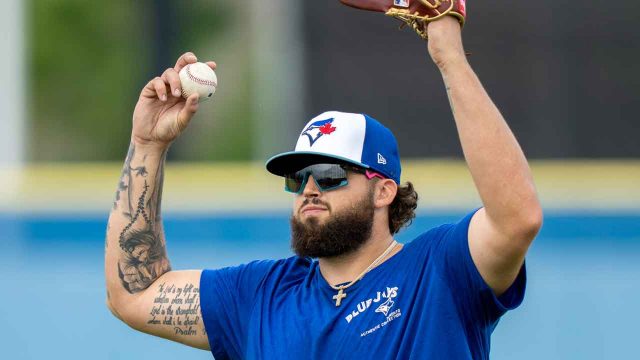DUNEDIN, Fla. — You’d never see it, what for all the pine tar, but halfway up Justin Turner’s bat there’s a small white Rawlings logo. Whenever he’s hitting in a meaningful situation — runners in scoring position with two out, trying to sustain a late-game rally, battling to stay alive against one of baseball’s elite closers — Turner stares at the space in the upper part of the letter “R,” takes a deep breath to centre himself, and then steps into the batter’s box.
“Taking that breath is so important,” Turner says. “Because what happens in those big situations is, a lot of times, we don’t breathe as well. And then our heart rate goes up. And when our heart rate goes up, we get tighter. We don’t see as well. And that’s where bad decisions or long swings come from.
“When you’re controlling your breath, slowing things down in the moment, that’s what gives you the best chance to be in the best position to make a good swing.”
This is how Turner, one of MLB’s most clutch hitters (if such a thing even exists), does it. This is the mind space he entered prior to the swing that drove a John Lackey fastball 416-feet over the centre field wall at Dodger Stadium to walk off Game 2 of the 2017 NLCS. It’s how he composed himself prior to hitting a game-winning, eighth-inning homer off Jeremy Jeffress in Game 2 of the NLCS exactly a year later.
It’s what he does to find his focus every single time he steps to the plate. It’s a routine he’s leaned on for literally decades, dating back to when he was playing in his first of three College World Series for Cal State Fullerton, where he studied kinesiology prior to being drafted in the seventh round by the Cincinnati Reds in 2006, signing for a meager $50,000 bonus, and forging an unlikely 15-year MLB career.
“Playing in the College World Series, that’s a pretty big stage for an 18-year-old,” Turner says. “You’ve got 30,000 fans in there screaming and yelling. And being able to slow things down and use your breathing to stay in the moment, I started feeling the effects of that right away. And it all translated early in my career.”
Turner learned many of his breathwork and mindfulness techniques from renowned sports psychologist Dr. Ken Ravizza, one of his professors at Fullerton. He was fascinated by Ravizza’s perspectives on mental skills, stress management, and performance — the then-nascent practices he taught that have since become widespread across professional sports. Over the years the pair forged a close friendship, one that extended throughout Turner’s MLB career until Ravizza died in 2018.
“Any time I saw there was a class available that he was teaching, I wanted to be in it. I found his teaching really valuable,” Turner says. “I got lucky that I got to spend a lot of time with him.”
Turner doesn’t believe he would’ve ever made an MLB plate appearance without Ravizza’s guidance — and certainly wouldn’t have performed as well as he has in meaningful moments. Opinions vary widely on the value and proper application of the term “clutch” in baseball. But there’s no denying that since his age-29 breakout with the Los Angeles Dodgers, Turner has fit the mould.
Look at his performance in high leverage situations — as defined by FanGraphs — over the last four seasons (rank among the 236-player sample with at least 100 such plate appearances in brackets):
AVG — .333 (8th of 236)
OPS — .944 (15th)
wRC+ — 152 (15th)
Here’s Turner in late and close situations — defined by Baseball Reference as any plate appearance from the seventh inning on in which the batting team is either in a tie game, ahead by one run, or has the potential tying run on deck — over the last four seasons (rank among the 363-player sample with at least 100 such plate appearances in brackets):
AVG — .302 (9th of 363)
OPS — .872 (20th)
Runs Created — 45.4 (13th)
Runs produced — 76 (18th)
And how about his results when hitting with runners in scoring position over the same span (rank among the 490-player sample with at least 100 plate appearances with runners in scoring position over the last four seasons in brackets):
AVG — .316 (19th of 490)
OPS – .931 (26th)
wRC+ — 150 (22nd)
Whichever way you slice it, we’re talking about one of this decade’s most successful hitters in big spots. And these numbers don’t include the post-season — when practically every plate appearance is a stress test — where Turner has hit .270 with an .830 OPS over 368 career plate appearances. Or his performance with two out and runners in scoring position, situations in which Turner has batted .282 with a .920 OPS and 150 wRC+ over the last five seasons.
That’s all wildly impressive. But for his part, Turner takes the most pride in converting the opportunities that get less attention than any of the above but can have just as much impact on wins and losses, such as batting with a runner on third and less than two out.
Last season, Turner came to the plate in that situation 44 times and cashed 31 of those runners, a 70.5 per cent conversation rate that ranked 12th-highest across MLB among the 296 players to bat in that scenario at least 15 times.
There were 11 Blue Jays to fall within that nearly 300-player sample last season. Only two of them — Bo Bichette (61.5 per cent conversion rate) and Whit Merrifield (58.3) — cashed that runner from third over half the time.
“You just have to focus on not trying to do too much. When you’ve got that guy on third and less than two outs, a lot of times guys want to get a hit so bad that they end up making an out or popping up,” Turner says. “I want to put myself in a position where, worst case scenario, I drive that run in. I might not get a hit. But I’m still going to drive that run in.
Continuing that trend of delivering in both high-leverage, late-inning moments, and the oft-overlooked earlier-game situations with runners in scoring position, is one of the various impacts the Blue Jays are hoping Turner can make on the one-year deal he signed this off-season. If you watched even a fraction of Toronto’s 2023 campaign, you already know why.
It’s a misnomer to say the Blue Jays didn’t hit last year. They ranked within the top-8 MLB-wide in batting average, on-base percentage, wRC+, and literal hits. The problem was they didn’t convert that offence into the category that ultimately matters on the scoreboard. The Blue Jays finished tied for 14th with 4.6 runs per game. And much of that inability to bring runners home can be traced back to performance in the game’s most meaningful spots.
In the situations FanGraphs describes as high leverage, Toronto’s offence produced a 101 wRC+ and a .726 OPS that ranked 17th across MLB. With runners in scoring position, that OPS was only .730, which ranked 20th. Compared to the Baltimore Orioles, the Blue Jays posted higher any-situation marks in batting average, on-base percentage, and even home runs. But Baltimore produced an MLB-high 128 wRC+ when hitting with runners in scoring position; Toronto’s was 102.
That’s how Baltimore ended up scoring nearly a half-run more per game last season than the Blue Jays and finished with a dozen more wins — one team produced consistently when it mattered most, the other didn’t. Those numbers also tell you why projection systems see only a win or two of separation in either direction between this season’s Orioles and Blue Jays. Sequencing and high-leverage production isn’t reliably sticky year-to-year.
But that doesn’t mean the Blue Jays can simply sit back and count on their luck to turn. They have to be better when games hang in the balance. And there aren’t many players in the sport with more proven approaches in those situations than Turner, who says the secret to doing more is trying to do less.
/* if ( "1" == true && 'undefined' !== typeof window.getIndexAds ) { var so = {preroll:{1:{1:{siteID:191888},2:{siteID:191889}}}}; adServerUrl = window.getIndexAds( 'http://pubads.g.doubleclick.net/gampad/ads?sz=640x360&cust_params=domain%3Dsportsnet.ca&iu=%2F7326%2Fen.sportsnet.web%2FVideo&ciu_szs=300x250&impl=s&gdfp_req=1&env=vp&output=vast&unviewed_position_start=1&ad_rule=1&vid=6347835580112&cmsid=384', so, permalink); } else { adServerUrl = "http://pubads.g.doubleclick.net/gampad/ads?sz=640x360&cust_params=domain%3Dsportsnet.ca&iu=%2F7326%2Fen.sportsnet.web%2FVideo&ciu_szs=300x250&impl=s&gdfp_req=1&env=vp&output=vast&unviewed_position_start=1&ad_rule=1&vid=6347835580112&cmsid=384"; } */ adServerUrl = "http://pubads.g.doubleclick.net/gampad/ads?sz=640x360&cust_params=domain%3Dsportsnet.ca&iu=%2F7326%2Fen.sportsnet.web%2FVideo&ciu_szs=300x250&impl=s&gdfp_req=1&env=vp&output=vast&unviewed_position_start=1&ad_rule=1&vid=6347835580112&cmsid=384"; var adServerUrl_result = adServerUrl.includes("cust_params"); var queryString=''; if(adServerUrl_result){ var gettheDUFI = localStorage.getItem("theRED_loc")
if(gettheDUFI){ queryString += "dufiid=" + gettheDUFI + '&'; queryString += "ppid=" + gettheDUFI + '&'; var ppid = "ppid=" + gettheDUFI + '&'; }
var DUFI_IP = sessionStorage.getItem("DUFI_IP")
if(DUFI_IP){ queryString += "dufiip=" + DUFI_IP + '&'; }
adServerUrl = adServerUrl.replace(/cust_params=/, ppid + 'cust_params=' + encodeURIComponent(queryString) ); }
$el.after( unescape("%3Cscript src=\"" + (document.location.protocol == "https:" ? "https://sb" : "http://b") + ".scorecardresearch.com/beacon.js\" %3E%3C/script%3E") );
$( document ).one( 'ready', function() { $( "#video_container-644158" ).SNPlayer( { bc_account_id: "1704050871", bc_player_id: "JCdte3tMv", //autoplay: true, //is_has_autoplay_switch: false, bc_videos: 6347835580112, is_has_continuous_play: "false", adserverurl: adServerUrl, section: "", thumbnail: "https://www.sportsnet.ca/wp-content/uploads/2024/02/6347835580112-1024x576.jpg", direct_url: "https://www.sportsnet.ca/mlb/video/schneider-believes-turners-relationship-with-mattingly-helped-in-signing-with-blue-jays/" }); });
“It’s about not trying to make the big swing and hit the big three-run homer,” he says. “Not trying to get a little more out of your swing. Or trying to hit the ball a little further. You want to just try to go up and take a good at-bat. And be on time and make sure you get a good pitch.
“You want to understand that the pressure is on the guy out there, not on you. He has to make his pitch. You want to relax and make sure you’re on time and getting a good pitch to hit. I think that gets overlooked in those situations because when you have a chance to do something big, guys sometimes get anxious. But, really, it’s about slowing things down, making sure you get that good pitch, and making sure you’re on time.”
It’s a subtle framing shift — the kind Ravizza would’ve preached. The pressure isn’t on you as a hitter, it’s on the pitcher. You just have to do your job. But it aligns with the description of clutch you hear often from the game’s best players — that a clutch hitter is one who maintains their approach in all situations. The athlete who doesn’t do anything differently when batting with the game on the line or in a blowout.
That 2-2 sweeper that starts on the outer-third before finishing off the plate isn’t offered at, regardless of whether the pitcher throwing it is a leverage guy protecting a late lead or a recent call-up working with a five-run cushion in the sixth. The 3-2 elevated heater that follows is squared up on a line, no matter if the game’s played before 40,000 in October or 9,000 in May. That’s probably the closest we can get to defining clutch as a repeatable skill.
It’s one Turner has demonstrated throughout his career; one the Blue Jays lacked more often than not in 2023; one that will require improvement if the club is going to avoid the hard post-season stops its met three of the last four years. For Turner, performance in those moments starts with a long look at his bat barrel and a deep inhale into his diaphragm. For each of his teammates, that mindfulness routine will look a little different. But the Blue Jays are hoping the collective mindset will be the same.
“Oh yeah, we’ve been talking about it — what the approach needs to be with guys in scoring position. Those conversations are already ongoing,” Turner says. “And that’s good. I think it needs to be talked about more. We should all be talking about not doing too much, keeping it simple. Almost backing off a little bit from what you’re trying to do. And just guaranteeing that in the worst-case scenario, you’re driving in one run. It doesn’t have to be any more complicated than that.”















 Bengali (Bangladesh) ·
Bengali (Bangladesh) ·  English (United States) ·
English (United States) ·